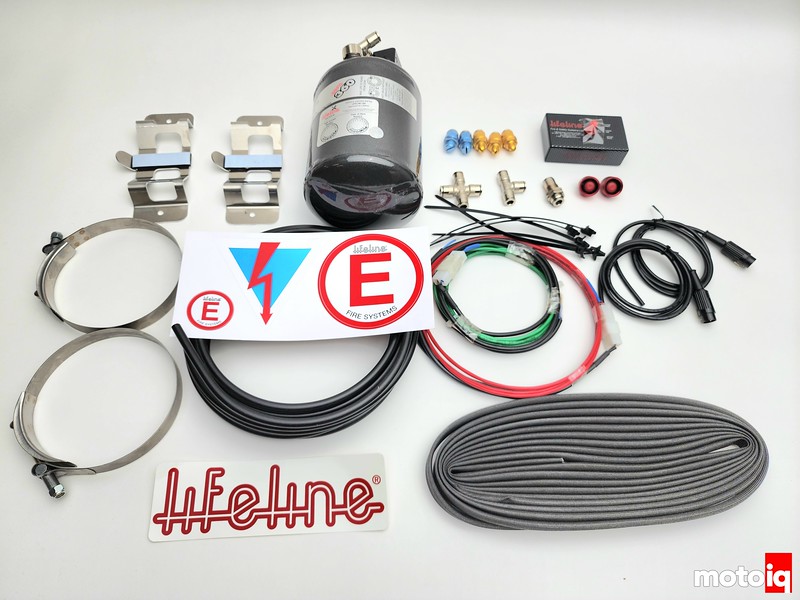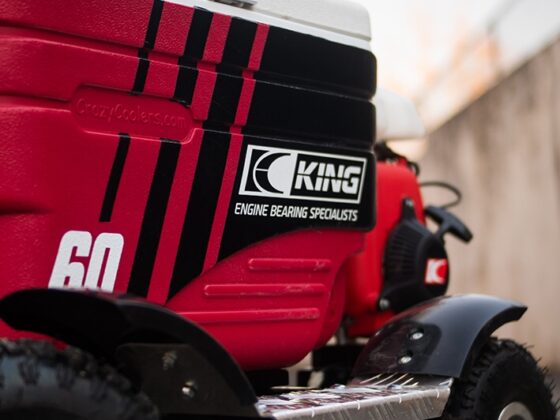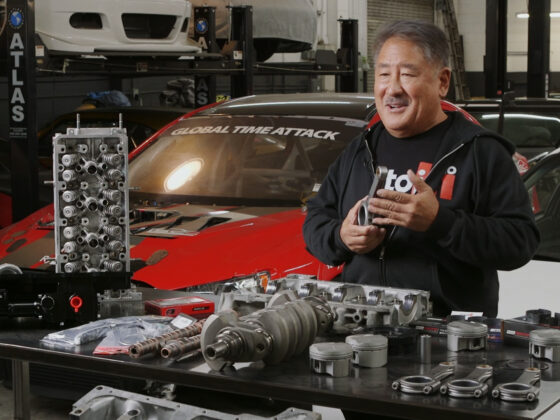
The Lifeline systems heart is this small and superlight nitrogen stored pressure bottle of 3M Novec 1230 fire fighting agent. This tiny bottle that holds 5 lbs of Novec is rated the same as an old 10 lb system.
Here is some info from 3M. 3M™ Novec™ 1230 Fire Protection Fluid is a next-generation halon alternative offering outstanding performance, a large margin of safety, and an excellent environmental profile.
• Zero ozone depletion potential
• 5-day atmospheric lifetime
• Global warming potential <1
• Large margin of safety for occupied spaces
Novec 1230 Fire Protection Fluid is based on a proprietary chemical from 3M called a fluroroketone. The full chemical name for this compound is dodecafluoro-2-methylpentan-3-one. Its ASHRAE nomenclature – the way it is designated in the NFPA and ISO 14520 clean agent standards – is FK-5-1-12. Novec 1230 fluid offers a unique combination of safety, low environmental impact, and extinguishing performance, making it the only chemical halon replacement to offer a viable, long-term, environmentally sustainable technology for special hazards fire protection.
Novec 1230 fluid is applied as a gas but is liquid at room temperature. It is electrically non-conducting in both the liquid and gaseous state. The breakdown voltage of Novec 1230 fluid vapor under saturated conditions at 1 atm, 21⁰C over a 2.7 mm electrode gap is 15.6kV, nearly 2.3 times that of dry nitrogen. The breakdown voltage of liquid Novec 1230 fluid under the same conditions is 48 kV. The properties of Novec 1230 fluid are similar to many of the first-generation halon alternatives with one primary exception – this compound is a liquid at ambient conditions. The boiling point of Novec 1230 fluid is 49.2⁰C, meaning this product has a much lower vapor pressure than other clean agents, which are gases at ambient conditions. Novec 1230 fluid has a very low heat of vaporization, approximately 25 times less than that of water. This, along with a vapor pressure 12 times higher than water causes Novec 1230 fluid to evaporate more than 50 times faster than water. This allows the agent to transition from a liquid to a gaseous state very rapidly. When discharged through a nozzle from a properly designed system, Novec 1230 fluid will rapidly vaporize and evenly distribute throughout the protected space.
Like other halocarbon halon alternatives, Novec extinguishes principally by removing heat from the fire. Upon
discharge, Novec 1230 fluid creates a gaseous mixture with air. This agent/air mixture has a heat capacity much larger than that of air alone. A higher heat capacity means that this gas mixture will absorb more energy (heat) for each degree of temperature change it experiences. At the system design concentration, the agent/air mixture absorbs sufficient heat to upset the conditions required for combustion to occur. The amount of heat the fire loses to the surroundings is increased by the presence of the agent. This causes the combustion zone to cool to the point that the fire extinguishes. Novec 1230 fluid has the highest heat capacity of the commercially available halon alternatives resulting in the lowest extinguishing concentrations for a given fuel. The design concentration for Class A combustibles is a minimum of 4.5 vol% for designs based on UL 2166 in the USA. Different minimum design concentrations may be required in other countries based on local approvals.

We opted for these strong floor mounts that hold the tank with T-Bolt clamps. Michelle’s car had a clamp on to the cage mount that slipped and crushed the lines when she crashed, rendering her fire system nonfunctional. We took note of that and will not have that happen with our car.

Part of the system’s effectiveness comes from these nozzles that atomize the Novec from liquid to gas as it dispenses and as a result, absorbs a lot of heat in the process. The 3 gold nozzles are designed to work in the engine compartment and the blue nozzles spray on the driver. Lifeline does not recommend spraying on the fuel tank as they state that no onboard system has enough capacity to fully extinguish a full tank and the engine compartment is the most likely source of a fire and spraying on the driver gives them the greatest chance of escaping a bad fire. The video evidence of Michelle’s crash backs this up. A functioning fire system would have made her exit from the car a lot safer, especially with a broken leg.




1 comment
Scary. Watching my trophy winning GC8 burn down was pretty damn shocking after I was a victim to insurance scammers (whom were later caught and I was cleared of fault). The responses of “fire extinguisher bro!” were very abundant, but like the article above, once the fire starts there is no stopping it.
https://youtu.be/G_PB2us2eS0?si=v40nhfqH6Z7l7JXd
https://www.instagram.com/p/CCTltBCJX1k/?utm_source=ig_web_copy_link&igshid=ODhhZWM5NmIwOQ==